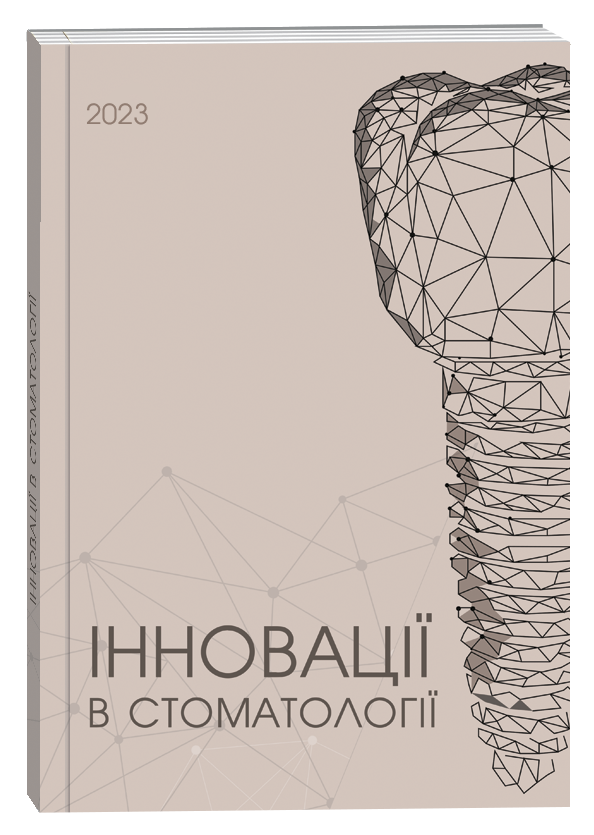SPECTRO-COLORIMETRIC ASSESSMENT OF THE EFFECT OF THERAPEUTIC AND PROPHYLACTIC MEASURES ON THE FUNCTIONAL STATE OF THE GINGIVAL MICROCAPILLARY BED OF PATIENTS WITH VARYING DEGREES OF PERIODONTAL TISSUE DAMAGE
DOI:
https://doi.org/10.35220/2523-420X/2024.2.4Keywords:
periodontitis, spectrocolorimetry, microcapillary bed, adult patients, oral cavityAbstract
Periodontitis, which is a chronic inflammatory disease of the periodontium, causes functional tissue hyperemia under the influence of mechanical stress. In this context, hyperemia depends on the state of capillaries, the tone of the vessel walls and is subject to internal factors, cellular response and the adequacy of the vasomotor system. Purpose of the study. Study of the functional state of the gingival microcapillary bed in patients with periodontitis in the process of prophylactic measures using spectrocolorimetric assessment. Materials and methods. The study involved 63 patients with varying degrees of periodontal tissue damage aged 35-60 years. The patients were divided into 2 groups. Treatment of patients in the main group was accompanied by the use of the developed complex. The spectra of light reflection of the gums and their color parameters were recorded using an automatic spectro-colorimeter "Pulsar". A statistically significant difference between alternative quantitative features with a distribution corresponding to the normal law was evaluated using Student’s t-test. The difference was considered statistically significant at p<0.01. Research results. The results of the studies conducted in the initial state showed that in patients with periodontitis of both groups under the influence of a regulated chewing load, spasm of the gingival capillaries was noted, that is, a decrease in them. A smaller decline in the values of color coordinates after chewing load in relation to the comparison group may indicate certain positive changes in the state of the microcapillary bed (spasm of capillaries almost disappeared and an increase in blood flow in them was observed compared to the initial data) of the gums in patients with periodontitis under the influence of prophylactic measures. Conclusions. The developed complex, which included drugs with detoxifying, immunomodulating, anti-inflammatory, periodontal protective effects, regulating microbiocenosis, led to a certain normalization of the functional state of the gingival microcapillary bed in patients of the main group and to a decrease in the degree of inflammation in them, which correlated with an improvement in their dental status.
References
Mariotti A., Hefti A.F. Defining periodontal health. BMC Oral Health. 2015. Vol. 15. Suppl. 1. P. 6. doi: 10.1186/1472-6831-15-S1-S6
Trombelli L., Farina R., Silva C.O., Tatakis D.N. Plaque-induced gingivitis: Case definition and diagnostic considerations. Journal of periodontology. 2018. Vol. 89. Suppl. 1. P. 46-73. doi: 10.1002/JPER.17-0576
Kornman K.S. Mapping the pathogenesis of periodontitis: a new look. Journal of periodontology. 2008. Vol. 79. Suppl. 8. P. 1560–8. doi: 10.1902/jop.2008.080213
Armitage G.C. Periodontal diagnoses and classification of periodontal diseases. Periodontology 2000. 2004. № 34. P. 9-21. doi: 10.1046/j.0906-6713.2002.003421.x
Дєньга О.В. Адаптогенні профілактика та лікування основних стоматологічних захворювань у дітей : дис. ... д-ра мед. наук: 14.01.22. Одеса, Одеський НДІ стоматології, 2000. 434 с.
Фастовець, О. О., Самойленко В. А. Донозологічна діагностика пародонтологічних ускладнень у ортодонтичних хворих при застосуванні незнімної апаратури. Вісник стоматології. 2016. № 2. С. 56–60.
Спосіб оцінки функціонального стану мікрокапілярного русла слизової ясен : пат. 47096 Україна : МПК А61N 5/00, А61К 8/00 / О.В. Дєньга, Е.М. Дєньга, А.Е. Дєньга. № u2009 09529 ; заявл. 17.09.2009 ; опубл. 11.01.10, Бюл. № 1.
Репецька О. М. Динаміка показників білкового обміну ротової рідини після комплексного лікування генералізованого пародонтиту у осіб молодого віку на тлі первинного гіпотиреозу. Український журнал медицини, біології та спорту. 2022. Т. 7. № 4 (38). С. 95–99. doi: 10.26693/jmbs07.04.095.






